
From the Archive
Middle School: Crossroads on the Path to College
A call for improving the experience for students in grades six through eight, published in the Winter 1993/94 issue of The College Board Review, takes on new urgency as the nation emerges from the pandemic
You don't need a report or expert to tell you how consequential middle school is. Set aside academics for a minute and focus on emotional and physical development—the years you spend in sixth, seventh, and eighth grades coincide with the point when humans go through some of the most awkward, unstable, formative experiences of their lives. We're figuring out who we are as people, just as nature starts changing our physical appearance. We're honing our personalities and learning how to seize and wield our agency, just as other kids going through the same decide this is the time to lean in to bullying. We're developing our own tastes in music and culture, just as our parents decide to clamp down on what we listen to and see. Add devices and social media to the mix and everything just gets ... extra.
To call the middle school experience rough is an understatement. And that's in a normal time. Imagine going through all that amid a global pandemic. "I feel like that little kid in me disappeared," Daylan Joya, a student at Ida B. Wells Middle School in Washington, D.C., told Surgeon General Dr. Vivek Murthy. Daylan's classmate Machi Brooks added, "Don't just treat us like, 'Oh you're a child, what you went through couldn't possibly be that bad.' Treat us like what we've been through is as equal to what you've been through."
As a November 24, 2021, Washington Post headline put it, "Middle school is always hard—and the pandemic made it worse." It's a reality born out in data, with young people struggling with their mental and emotional health especially. But they've felt the impact in their school lives, too. Besides the harm that comes from having minimal physical social contact with friends, going to school online—at a crucial time in cognitive development—disrupted how kids learned, what they learned, and how prepared they are for academic advancement. Unsurprisingly, as Brookings found in research released in March 2022, test scores and achievement gaps widened along income and access lines.
What makes this all the more disheartening is the simple reality of middle school: it's incredibly important. And one wrong step can have lifelong consequences. "The middle school years are a time when a large number of students lose their enthusiasm for learning or fall behind in their academic and intellectual development," wrote Phyllis Hart in the Winter 1993/94 issue of The College Board Review. "It is essential that middle school students receive the skills, information, and support needed to achieve the dream of a college education."
In her article, Hart, at the time executive director of the Achievement Council in Los Angeles, makes the case for middle schools as a "critical linchpin in preparing for postsecondary education and argues that students must be offered challenging curricula, moral support, and guidance if they are to reach their goals. Who can argue with that? Still, she leans heavily on research and learnings to prove her case—a case that's all the more urgent today.
In fact, one piece of Hart's piece feels like it could have been written today rather than 30 years ago. "In the middle grades, when students greatly value socialization with peers, they may be expected to work alone, without interaction or cooperation with other students," she wrote. "They need adult guidance to help them understand their world and make choices that will have lifelong repercussions, yet schools often make it difficult for students to develop supportive relationships with counselors or teachers."
Those challenges only increased in the years since her article was published. The arrival of covid-19 intensified the spotlight on those issues—and the urgency of ensuring young people get the resources they need to succeed, both as students and as people. But the trauma of the pandemic also demonstrated an often overlooked facet of the middle school years. Young people aren't passive actors in this story, and the agency they're beginning to lean into can be used to help them get through.
"Now, I just like, instead of just like standing back, and not trying, not like taking a stand and trying to help a community ... I just want to jump into action and try to help people more," 11-year-old Fadzai Gides told The Hechinger Report. Kayla Michelle Wilson, talking to Surgeon General Murthy, said, "Part of this era of my life is going to be stuck with me. It's going to make me a stronger person."
Will middle schools emerge stronger, too? It's too early to say. But an article like Hart's is a good reminder that those institutions have always mattered—and always will.
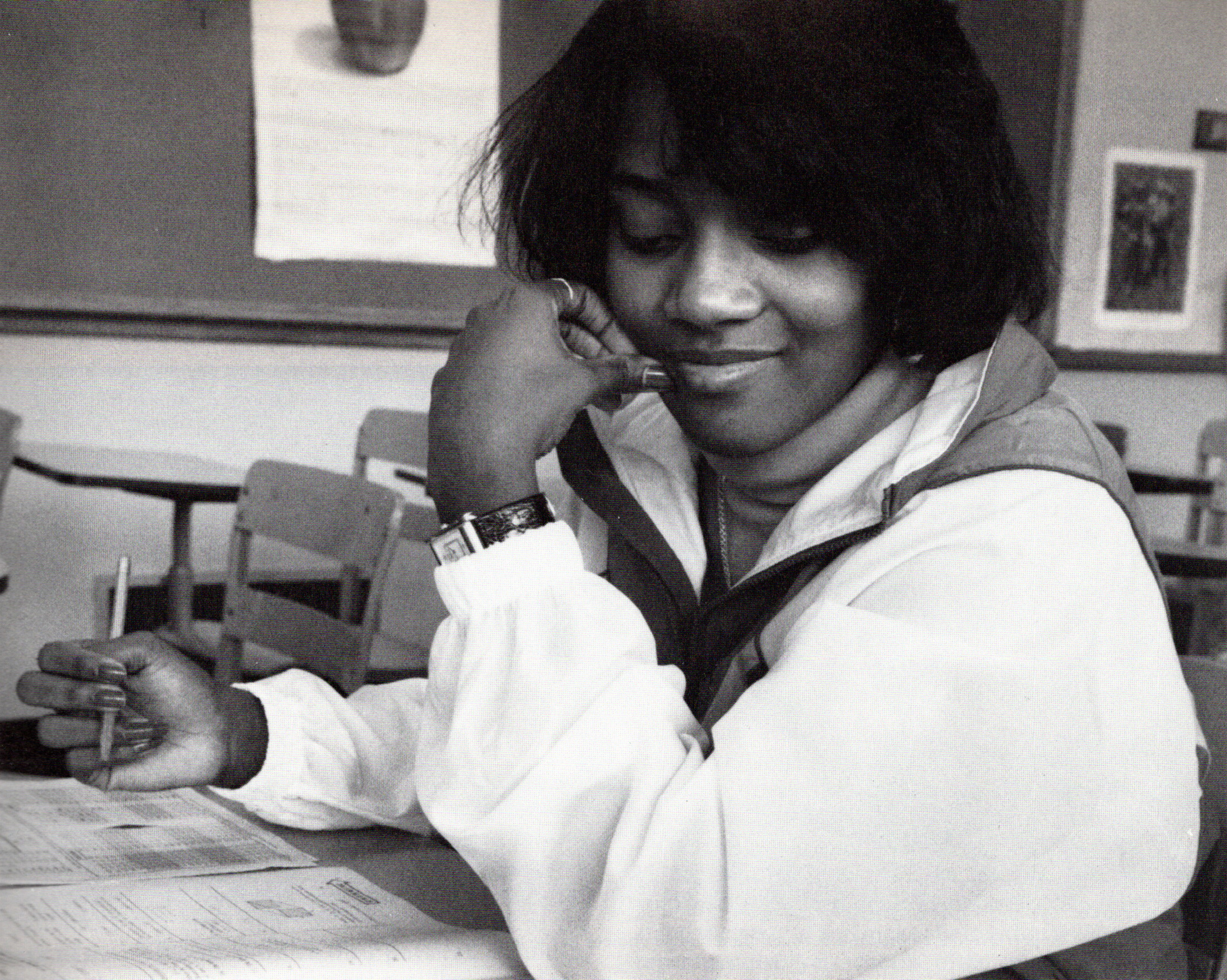
Christina Thomson/Scotch Plains-Fanwood High School
Middle level reform efforts should affirm the potential of each student to achieve at high levels and match high expectations with support.
Middle grade students are unique. No other grade span encompasses such a wide range of intellectual, physical, psychological, and social development, and educators must be sensitive to the entire spectrum of these young people's capabilities. For many students, the middle grades represent the last chance to develop a sense of academic purpose and personal commitment to educational goals. Those who fail at the middle grade level often drop out of school and may never again have the opportunity to develop to their fullest potential. 1·p.1
Although the education system's failure to support youth in reaching their potential has always been tragic and costly for both individuals and our nation overall, the requirements of the emerging postindustrial economy increase the urgency for reform. At a time when a twelfth-grade literacy level or higher is needed for stable employment, we can ill afford to limit the achievements and aspirations of our youth.2 Yet our schools continue to shortchange a large number of students, particularly those from low-income families or those who are Native American, African American, or Hispanic. Although workforce projections indicate that close to 50% of all jobs in the twenty-first century will require college degrees, fewer than 20% of Native American, African American, or Hispanic youth enroll in college.
Within the school reform movement, junior high and middle schools, which were initially neglected, are now gaining increasing visibility. Middle school reform is essential in order to leverage and extend the effects of elementary reform. Reform is also needed in order to prepare students for secondary and postsecondary education requiring analytic and critical thinking capacities. Unfortunately, traditional junior high schools, especially those serving low-income and minority youth, have largely failed on both counts.
Rather than develop curricula, pedagogy, and course schedules based on the developmental capacities and needs of their students, traditional junior high and middle schools tend to imitate the high school structure and organization.3 For example, students may be assigned to rigid tracks that greatly limit their current and future learning opportunities, typically without the students' or their families' understanding.4·5
Course schedules and structures allow students only limited opportunities to develop supportive relationships with school teachers or counselors, despite the importance of adult guidance during early adolescence. And the curriculum may fail to address students' interests and experiences. As a result, the middle school years are a time when a large number of students lose their enthusiasm for learning or fall behind in their academic and intellectual development.
Similarly, the organization and functioning of traditional junior high and middle school support services leave critical student needs unmet. Many students lack information and support as they struggle with decisions concerning such critical issues as sexual behavior, drugs and alcohol, or gangs and violence. These external pressures may distract students from schoolwork and derail their education goals.
Few students are told how their current education choices will influence their future options, or are encouraged to dream and plan for a college education (in fact, they may even be discouraged). As a result, many students who aspire to careers that require a college education do not enroll in precollege courses.
Students' educational activities during the middle school years can have lifelong importance. For example, if they are not prepared to succeed in algebra by the ninth grade they will be ineligible for admission to many four-year colleges. If they are placed in a general, vocational, or remedial track, they will not receive either the information or the training they need to prepare for college.
By the time students enter high school, their future options may already be constrained. It is essential that middle school students receive the skills, information, and support needed to achieve the dream of a college education.
This is not to imply that middle school is the starting place for the college preparation process. I contend that this process, which requires challenging curricula combined with support and guidance, should extend from early elementary school through the high school years. The middle school years are, however, a critical linchpin in the system.
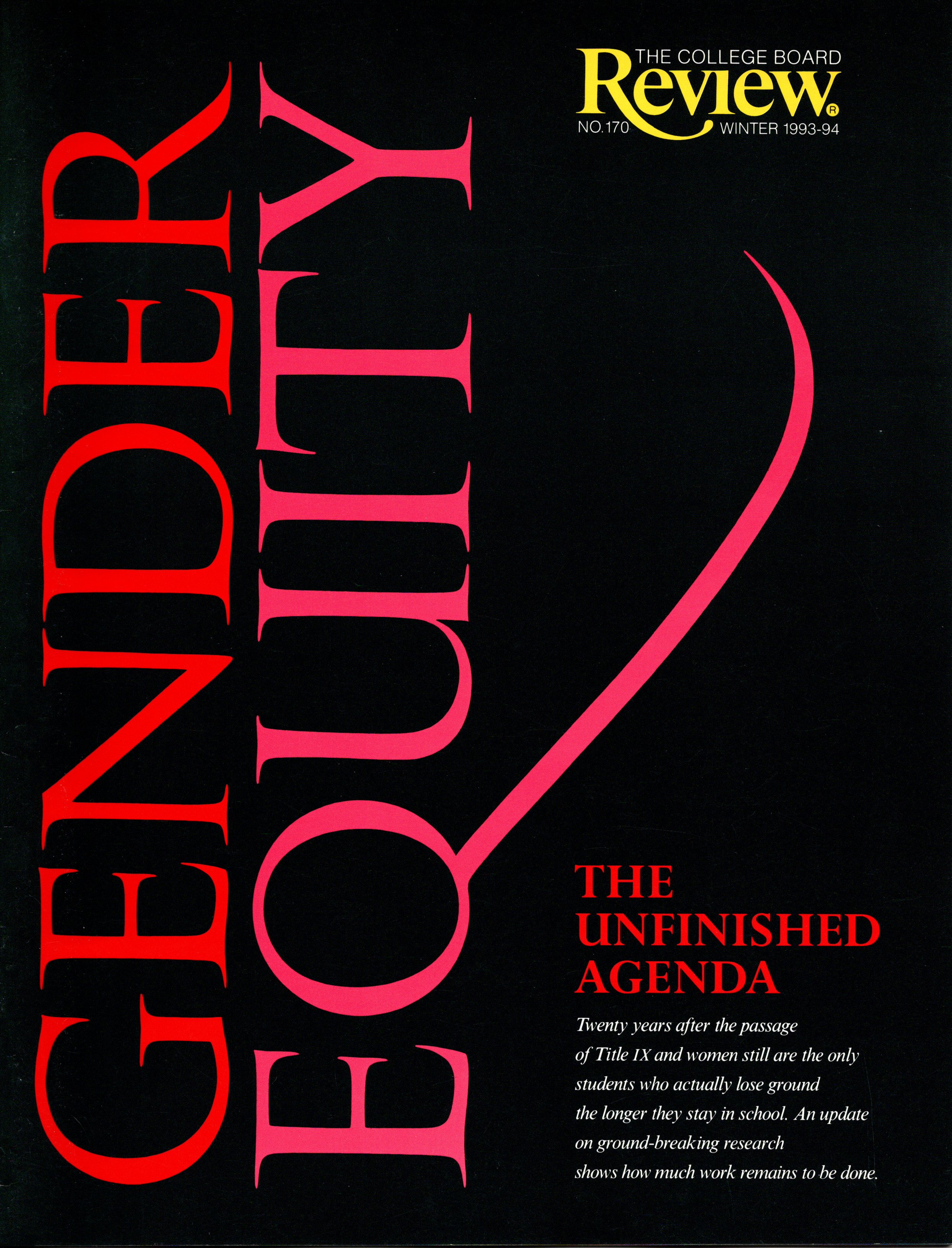
Problems and Shortcomings
Many traditional junior high and middle schools, especially those that serve low income and minority youth, are failing to adequately educate and support their students. Results from the National Assessment of Educational Progress paint a dismal picture of achievement among 13-year-olds, especially African American, Hispanic, and Native American youth in disadvantaged urban and rural communities.
These schools typically emphasize remedial work rather than high achievement and offer few college preparatory courses, thereby conveying the expectation that few students will attend college or even graduate from high school. In many cases, course content is watered down so that few students entering high school are prepared for a precollege curriculum. Then, when only a small number of students achieve college admission, the school's emphasis on remedial, vocational, or "general" education is reinforced.
Educators and researchers point to a variety of ways in which traditional junior high and middle schools have failed early adolescents. This section reviews three major shortcomings: tracking, teaching methods, and guidance and counseling services.
Tracking, perhaps more than any other education practice, institutionalizes inequity by denying students the opportunity for a challenging education that will prepare them for productive roles in the postindustrial economy.
From the earliest elementary years, students are placed in "ability" groups. Yet membership in such groups is most often based on children's acquired skills and subjective evaluations by school teachers and counselors. Those placed in the highest groups receive an enriched curriculum that ensures their skills will continue to grow. Those in the lower groups are assigned boring drills and repetitive exercises that do little to promote their development. They receive negative messages about their worth and potential, and they discover that school is boring and often demeaning.
The grouping practices typical of elementary schools often harden into tracks in the middle grades. This system of structured inequality reflects and exacerbates the effects of previous educational inequities. P. Hart and M. Jacobi explain:
By sorting students on the basis of perceived ability, tracking becomes a self-reinforcing, and even a self-amplifying, system. Students who are perceived as having high ability (but in reality simply acquire good skills) are exposed to the most talented teachers, the most rigorous curriculum, and the highest level of stimulation and challenge. Students perceived to have low ability are exposed to less talented teachers, a curriculum somewhere between easy and empty, and low levels of stimulation. Parental expectations are tracked as well, and parents of students labeled "low ability" start believing that their children are not as bright as others, thereby contributing to the cycle.6 (p.5)
Students placed in the lower tracks face almost insurmountable obstacles to obtaining the skills and knowledge they need for college. The likelihood that they will receive information about college or encouragement to attend college is minuscule. Even for students who do not choose to attend college, the watered-down curriculum typical of these tracks fails to prepare them for the requirements of the workforce.
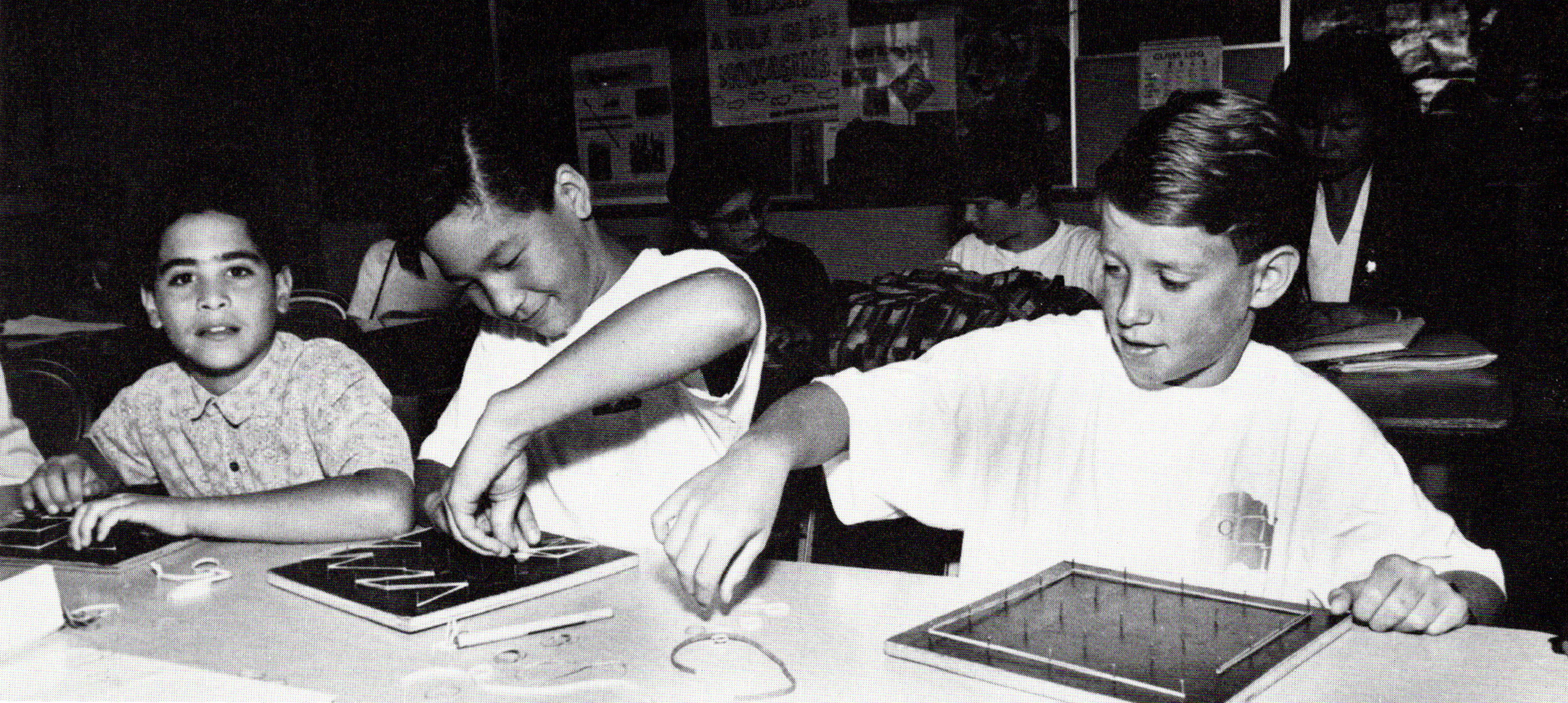
EQUITY 2000
Many students fail to perceive the connection between their course choices in the middle grades and their future career choices.
Students in remedial or vocational tracks receive a less challenging curriculum that places little emphasis on critical thinking or analysis. They are taught by less experienced teachers and have access to fewer learning resources, such as computers.7
For example, an observational study of mathematics tracking in middle schools in six urban school districts found that academic content was more highly emphasized in high-ability groups, while student behavior and procedures for getting work done were more highly emphasized in low-ability groups.
Furthermore, students in low-ability groups received relatively little exposure to mathematical skills and concepts such as word problems and algebra, which are essential to precollege preparation.8 (p.37)
In addition, the low levels of stimulation and encouragement offered to youth in nonacademic tracks increase the likelihood that they will lose motivation and become alienated from school. Thus, tracking implicitly sends a message that devalues heterogeneity and discounts the possibilities of a large number of students, right at the stage of development in which their physical, cognitive, emotional, and social capacities are rapidly increasing:
The diverse patterns of early-adolescent development cry out for the kind of education that opens rather than closes doors and encourages rather than discourages intellectual and social exploration. Even if homogeneity were desirable, the rapid rate of adolescent development makes creating a truly homogeneous group of young people a virtual impossibility—even for one year! Recognition of early adolescence as a stage of life characterized by diverse patterns of growth underscores the benefits of heterogeneous grouping at the middle level.7 (p.12)
A disproportionate number of minority and low-income students are placed in vocational or general tracks rather than academic tracks.7, 9 Minority students are twice as likely as white students to be assigned to slow or remedial classes, even after controlling for test scores and other quantitative measures.
Unfortunately, tracking continues to pervade the education system. J.J. Braddock's review of the literature indicates that between 66 and 90% of middle school students are tracked, at least in some subjects, and almost 25% are tracked in all subjects.10 Tracking is most common in inner city schools, where low-income and minority students are likely to be the victims.
Teaching methods are often a bad fit with students' developmental capacities and needs. The structure, pedagogy, and curriculum of many traditional middle and junior high schools are poorly suited to the developmental needs of adolescents.2-3, 7, 11-12 A complete review of middle grade curricula and pedagogy is beyond the scope of this paper, but a few examples may be helpful. The College Board's Commission on Precollege Guidance and Counseling addresses some of the potentially problematic structural elements of middle and junior high schools:
The anonymity and inflexibility of the school day can be difficult for students who are experiencing the physical and emotional changes of adolescence. Interaction with adults in the school becomes more formal and fragmented, and it comes at a time in their lives when students need consistent attention from adults.13 (p. 7)
At an age when students are intensively self-conscious and often lacking in self-confidence, they are often subjected to demeaning evaluations and rigid track placements. In the middle grades, when students greatly value socialization with peers, they may be expected to work alone, without interaction or cooperation with other students. They need adult guidance to help them understand their world and make choices that will have lifelong repercussions, yet schools often make it difficult for students to develop supportive relationships with counselors or teachers.
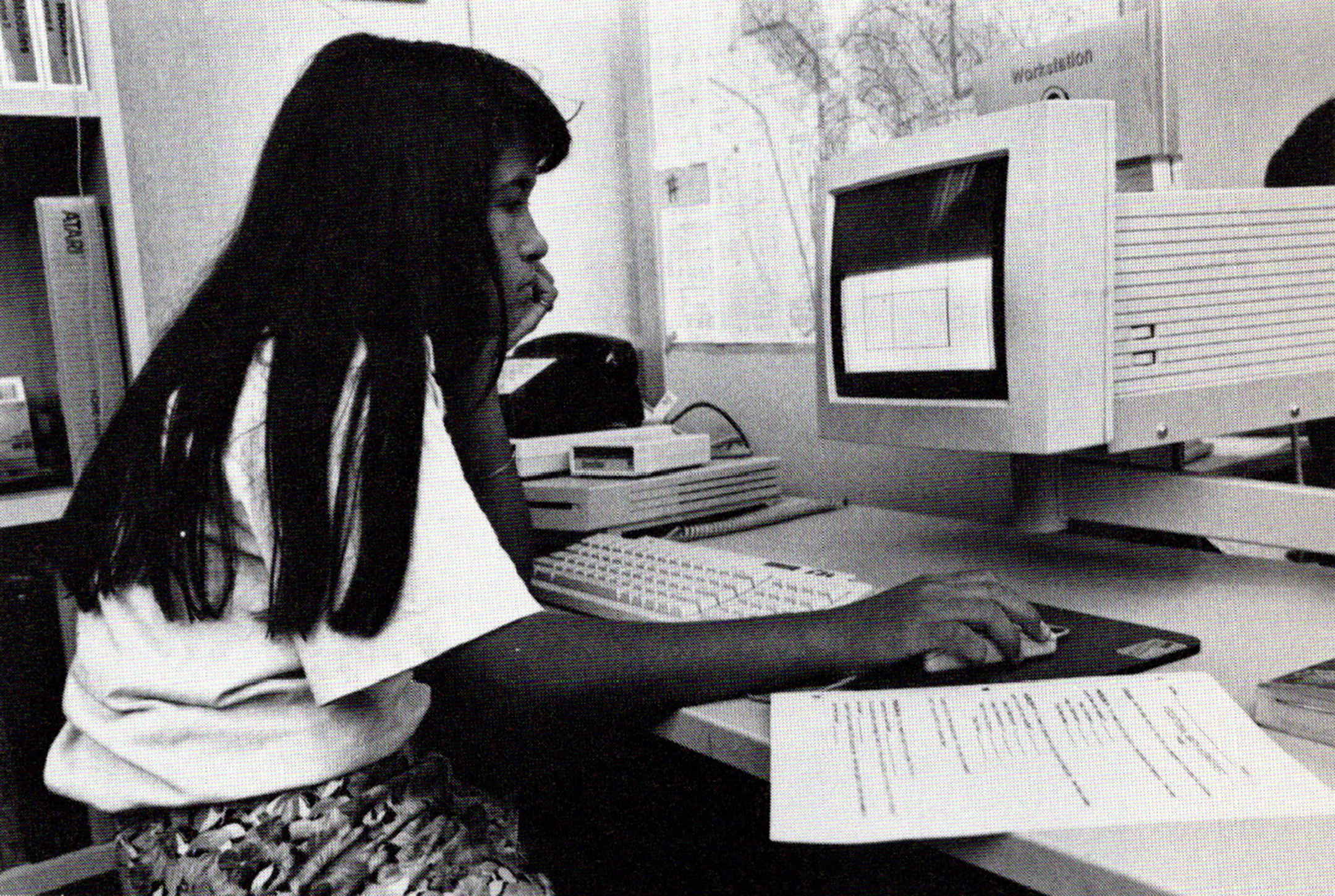
EQUITY 2000
Unfortunately in the middle grades, when students greatly value socialization with peers, they may be expected to work alone.
At a time when students are developing higher-order intellectual capacities, they are often forced to spend their school days memorizing facts. Bursting with energy, they are expected to sit still and listen for most of the day. As a result many students become bored, alienated, or otherwise disenchanted with school.
Guidance and counseling services are often inadequate. It is typically in the middle grades that students first face choices about which courses to take. For example, if they do not take certain courses, such as pre-algebra, they will be unable to enroll in a precollege curriculum and will be limited in their secondary and postsecondary options.
Many students fail to perceive the connection between their course choices in the middle grades and their future. National surveys of students consistently find incongruities between students' course-taking patterns and future plans. High School and Beyond [a study released in 1980 -Ed.] results indicate that fewer than half of those ninth grade students who planned to enter college were enrolled in an academic curriculum.9, 13 The National Education Longitudinal Survey of 1988 replicated these results, finding even larger disparities among African American, Hispanic, and Native American students.14
Misconceptions about the consequences of education decisions by students and their families continue, in part due to the small number of counselors serving middle schools. Although both the American School Counselor Association and the National Association of College Admission Counselors recommend counselor-to-student ratios of no more than 1:300, these ratios average 1:360 in the middle schools and are far higher in urban settings.2
For example, Los Angeles Unified School District, the second largest in the country, has a counselor-to-student ratio of 1:1,000 in the middle schools. The uneven distribution of counseling resources perpetuates education inequity, because the students most in need of guidance and counseling (those in low-income inner city and rural areas) are least likely to have access to these services. 15
Furthermore, counselors serving middle grade students have a wide array of responsibilities. Many do not perceive precollege counseling to be part of their responsibilities, and others are simply too busy to provide precollege information and guidance to students.
Middle school counselors typically provide crisis counseling for such problems as pregnancy, drug abuse, or family violence; they may serve as disciplinarians; they are asked to assume administrative responsibilities related to scheduling and course placements; and they often administer and interpret tests. This leaves little time to assist students and their families in making education decisions. And few schools have developed networks of teachers, school personnel, parents, social service agencies, or community members to supplement and extend the efforts of guidance counselors.

EQUITY 2000
Middle schools should be viewed as launching pads for postsecondary education and for systematic efforts to promote precollege planning.
Directions for Change
Educators have identified a number of key elements for effective reform at the middle school level. Such efforts may take various forms, but they should be based on a philosophy that affirms the potential of each student to achieve at high levels and matches high expectations with support.2,6 In addition, reform efforts must address the developmental needs of middle school students, who are firmly in the throes of adolescence.
Middle school reforms generally promote the development of a rigorous curriculum that emphasizes integrated skills, analytical thinking, problem solving, and learning to learn. Curricula that link course content to students' experiences, interests, and communities are viewed as particularly engaging for this age group. Instructional practices typically emphasize active learning within a cooperative setting. Efforts to develop a supportive social climate that fosters student "connectedness" to the schools may also be implemented, often by reducing the scale of the school and purposefully creating small learning communities.1
In response to students' fragile sense of self-esteem during this time, middle schools strive to develop evaluation methods that balance a realistic appraisal of student needs against a recognition of their accomplishments and achievements. In addition, many middle school reforms try to promote more interaction between students and community members, through such activities as mentoring or youth service. Involvement of family members is also seen as critical to effective school reform at this level.
I believe that two elements are essential to effective school reform in the middle grades. The first is detracking and a strong emphasis on equity. Simply put, the negative effects of tracking will outweigh other factors and perpetuate a system that systematically denies support, stimulation, intellectual growth, and the opportunity to prepare for a college education to many students, most of them from low-income or minority families.
There are now several excellent demonstrations of the process and outcomes of detracking. For example, Ms. Wheelock provides a how-to guide to detracking, including descriptions of effective programs and curricula and case studies of schools that have detracked.7 Another example can be found in Joan Cone's recent article, "Learning to Teach an Untracked Class."16
Although the elimination of tracking is necessary, it is not a solution to eliminating inequity in middle schools. Teachers and counselors must become aware of the ways in which they show differential treatment to students of different backgrounds, races, or ethnicities. They must learn to avoid reinforcing stereotypes and attempt to establish high standards and a supportive learning climate for all students.
The second element in effective school reform is building awareness of the need for change. Administrators, teachers, counselors, other school staff, parents, community members, and students must share a vision of the future that motivates and guides the reform process. Such an awareness includes recognizing the importance of student achievement and acknowledging the capacity of all students to achieve at high levels; identifying obstacles to student achievement; understanding students' needs; and learning about change models and change processes.
It also includes understanding the links between students' course selections in the middle grades and their future education and career options, recognizing the importance of enrolling in algebra and geometry classes, and understanding college application and admission procedures.
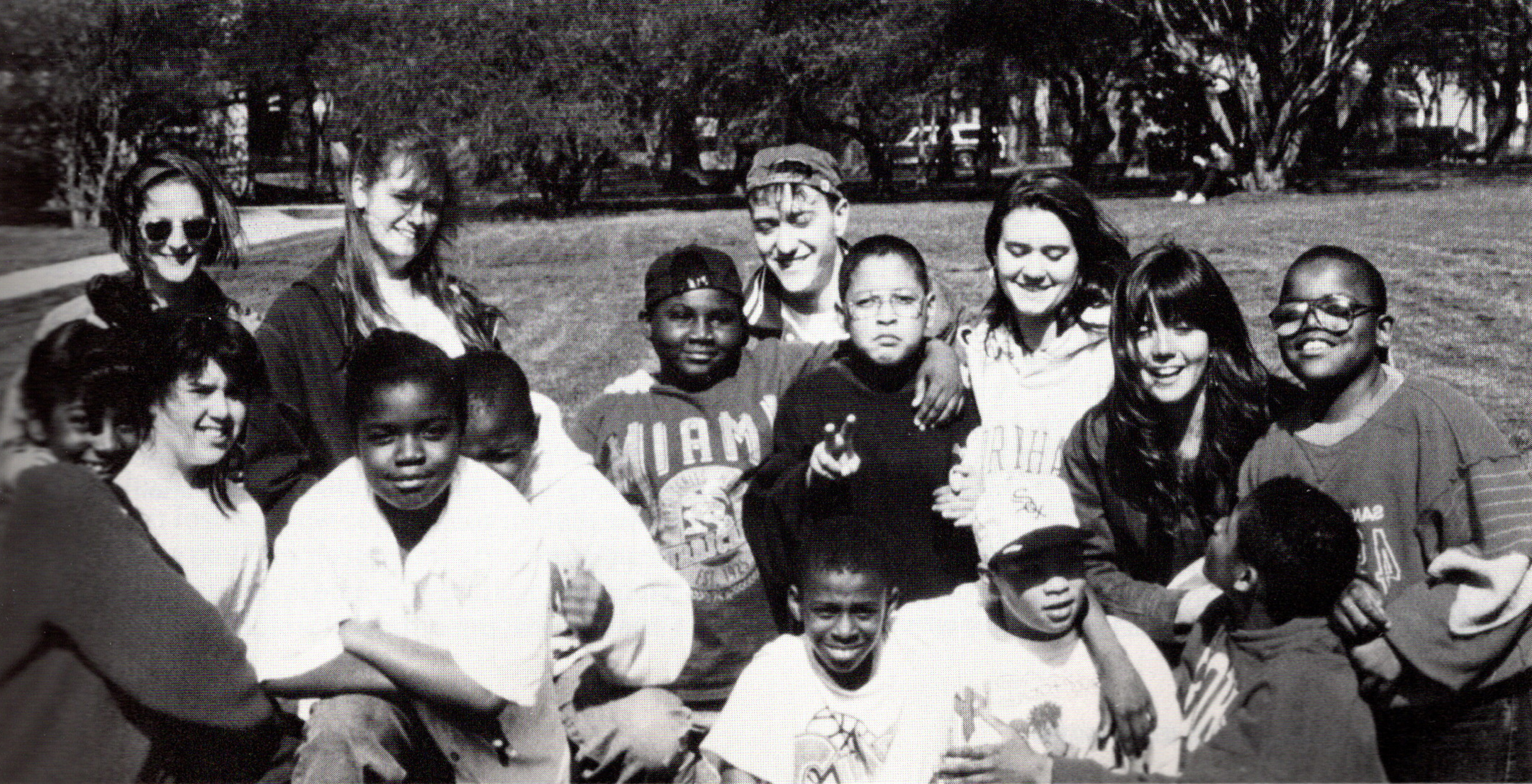
Fordham University
When middle schools offer a strong, challenging, and engaging curriculum that strengthens students' confidence and commitment to education, enhanced preparation for college is a likely by-product.
Precollege Planning and Preparation
Despite many promising innovations at the middle school level, few reform efforts have consciously emphasized the role of middle schools in precollege preparation. The early outreach programs sponsored by some colleges and universities are perhaps the most common interventions. Although these programs are important and should be expanded, they are unlikely to spur lasting transformations of a middle school's education mission, philosophy, and approach.
In some cases, college outreach is available to only a limited number of students; in others, programs tend to be one-shot presentations that may raise awareness but fail to convince students (especially minority students) that college is a real option for them.
When middle schools offer a strong and challenging curriculum that engages students in learning and strengthens their confidence and commitment to education, enhanced preparation for college is a likely by-product. But students and their families also require more direct kinds of assistance, particularly information and guidance about why and how to prepare for college, which courses to take, and how the college admission process works so that they can turn their dreams into reality.
Although college counseling has traditionally been viewed as the responsibility of high school counselors, the college admission process requires students to begin planning much earlier. As a result, the Commission on Precollege Guidance and Counseling recommends that students receive guidance and counseling during the early and middle years of schooling. This is particularly important for disadvantaged students who, in the absence of intervention, are likely to have misconceptions about the education system and may make decisions that limit their future career and education options.
The commission also recognizes a critical yet often neglected element of middle school reform: the obligation to encourage all students to hold high aspirations for themselves:
When crucial choices about courses are made, it is important for students and parents to believe that college is a real possibility, financially as well as academically. Without such information, young adolescents are likely to make educational choices that limit rather than advance their academic aspirations. Indeed, schools have responsibility for helping develop those aspirations, rather than just recognizing them when they emerge among some students." 17· (p. 16)
Similarly, the National College Counseling Project recommends development of college guidance curricula that reflect the principle of "have a plan and start it early"—certainly before high school.18
The College Board, along with a number of other organizations, has developed models for school reform. Nationwide, middle school reform is gaining increasing visibility and success. Promising reform strategies emphasize development of a rich and challenging curriculum, age-appropriate pedagogy and structure, and high levels of support and encouragement.
If we can foster a new concept for middle schools as the "launching pad" for postsecondary education and for systematic efforts to promote precollege planning and preparation for middle school students, then we will have come a long way. Indeed, we will be on the path to ensuring that all students have a chance to achieve success not only in school and college but in their lives.
References
1. California State Department of Education, Caught in the Middle (Sacramento: California State Department of Education, 1987).
2. Anne C. Lewis, Making It in the Middle (New York: Edna McConnell Clark Foundation, 1990).
3. P. S. George, C. Stevenson, J. Thomason, and J. Beane, The Middle School—and Beyond (Alexandria, Va.: Association for Supervision and Curriculum Development, 1992).
4. J. Oakes, Keeping Track: How Schools Structure Inequality (New Haven: Yale University Press, 1985).
5. J.E. Rosenbaum, Making Inequality (New York: Wiley, 1976).
6. P. Hart and M. Jacobi, From Gatekeeper to Advocate: Transforming the Role of the School Counselor (New York: College Entrance Examination Board, 1992).
7. Anne Wheelock, Crossing the Tracks (New York: New Press, 1992).
8. A. M. Villegas and S. M. Watts, "Life in the Classroom: The Influence of Class Placement and Student Race/Ethnicity." Paper prepared for the symposium, On the Right Track: The Consequences of Mathematics Course Placement, Policies and Practices in the Middle Grades, presented at the annual meeting of the American Educational Research Association, Chicago, Ill., 1991.
9. R. B. Ekstrom, "A Descriptive Study of Public High School Guidance: Final Report to the Commission for the Study of Precollegiate Guidance and Counseling" (Princeton, N.J.: Educational Testing Service, 1985), unpublished paper.
10. J. J. Braddock, "Tracking the Middle Grades: National Patterns of Grouping for Instruction," Phi Delta Kappan 71 (February 1990).
11. Carnegie Council on Adolescent Development, Turning Points: Preparing Youth for the Twenty-first Century (New York: Carnegie Corporation, 1989).
12. Lilly Endowment, Inc., Annual Report 1990 (Indianapolis: Lilly Endowment, Inc., 1991).
13. Commission on Precollege Guidance and Counseling, Keeping the Options Open: An Overview (New York: College Entrance Examination Board, 1986).
14. Higher Education Information Center, "Middle School Needs Assessment" (Boston: Higher Education Information Center, 1990), unpublished paper.
15. V. E. Lee and R. B. Ekstrom, "Student Access to Guidance Counseling in High School," American Educational Research Journal 24 (1987).
16. Joan Cone, "Learning to Teach an Untracked Class," The College Board Review 69 (Fall 1993).
17. Commission on Precollege Guidance and Counseling, Keeping the Options Open: Final Report (New York: College Entrance Examination Board, 1986).
18. National College Counseling Project, Frontiers of Possibility (Alexandria, Va.: National Association of College Admission Counselors, 1986).
Additional references included at end of original publication but not cited in text
19. The Center for Human Resources, Future Options Education (Waltham, Mass.: Brandeis University, 1990).
20. National Middle School Association, This We Believe (Columbus, Ohio: National Middle School Association, 1992).
21. S. H. Pelavin and M. Kane, Changing the Odds: Factors Increasing Access to College (New York: College Entrance Examination Board, 1990).


